Yunnan Tour 2 in the early winter of 2021: Dali and Shaxi Ancient Town
After leaving Wuliang Mountain in Nanjian County, we headed north. Today's destination is Shaxi Town, Jianchuan County, the only relatively well-preserved important town on the Ancient Tea Horse Road.
The car passed through Dali City and wanted to just make a short stop for a meal. Before coming here, I heard many people criticize the ancient city of Dali for excessive commercial development. But just as we were eating, the clouds that had been gloomy and thick since the morning suddenly opened a gap and sprinkled a few wisps of Buddha's light. We immediately decided to browse Cangshan and Erhai. Erhai Lake is the second largest lake in Yunnan Province, with a total area of 246 square kilometers and is narrow from north to south. Cangshan Mountain is located on the west side of the Erhai Lake and stretches continuously along the Erhai Lake. Dali City has built a road around the lake along the Erhai Lake, about 120 kilometers long. We abandoned the ancient city of Dali, Santa Temple and Butterfly Spring on the west bank of the Erhai Lake. They just stopped and stopped from south to north along Haidong Road, and stopped in Wase Town, Xiaoputuo Island and Shuanglang Observation Deck to admire the lakes and mountains. Dali is really a romantic place. On the road around the lake, colorful luxury cars (all bought and modified second-hand cars) carry young men and women for rides. There are many car rental spots on the roadside. When I asked about it in the past, I found that renting such a Porsche convertible was only 160 yuan a day. The boss said that there were no tourists this year, making business difficult. Shuanglang Town used to be a small fishing village, but now there are rows of celebrity mansions, shops, and inns. Among them, the Sun Palace, the grand mansion of dancer Yang Liping, is on the shore. The government has drawn a red line to protect a basin of clean water in the Erhai Lake, requiring all buildings to retreat 30 meters away from the shore. It is not known whether this ban can be effectively implemented.







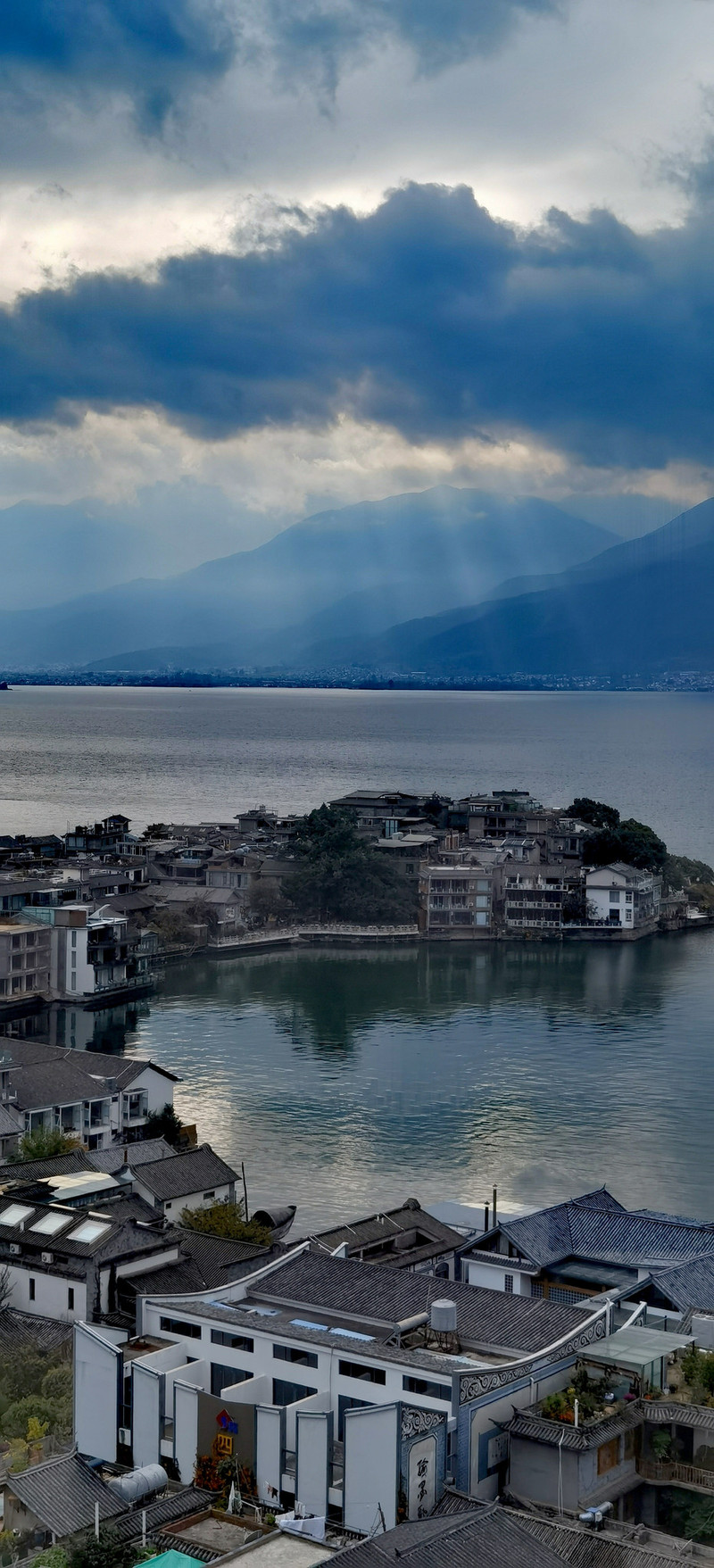
Shaxi Town is more than 100 kilometers away from the ancient city of Dali in the south and more than 30 kilometers away from Jianchuan County in the north. It is located in a mountain depression surrounded by mountains on all sides. An endless river, the Heiyan River, the main tributary of the Lancang River, runs through the town, dividing the Shaxi River into two parts: east and west. The ancient town where the caravan gathered was on the west side of the river, and across a field on the east bank of the river was a peasant village. There are two bridges on the river, one of which is a stone arch bridge used by the horse gang. It has a considerable history. The stones on the bridge deck have been potholed by the horse's hooves. Back then (Qianlong of the Qing Dynasty) villagers raised money for the construction of this bridge. The great Bai poet and great litterateur Fan (also known as Li Yi) wrote a couplet for the event. The first couplet,"Stone can form a bridge, and from now on, there will be no crossing without singing", and the second couplet,"Tianjin is really jade, and only then can we know that the water has its source here." After the stone bridge was completed, it was named "Yujin Bridge". Nowadays, this ancient bridge has become one of the four famous scenic spots in the ancient town and is a must-visit for photography enthusiasts. Whether it is the mist on the river at sunrise, the curling smoke from the village opposite, or the red clouds at sunset, both sides of the Yujin Bridge are the best places to shoot.










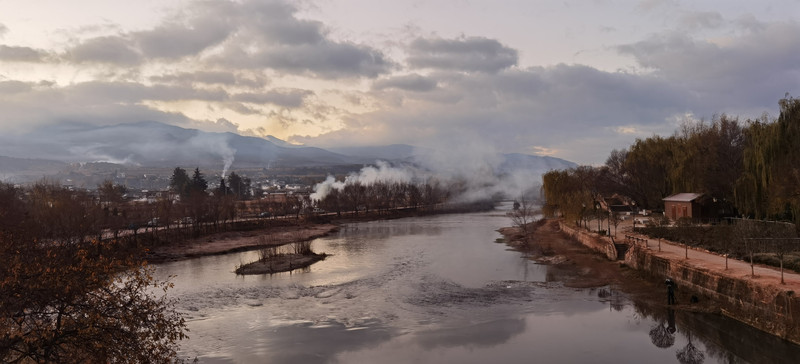






Shaxi Ancient Town was built in the late Southern Song Dynasty and reached its peak in the late Qing Dynasty and the early Republic of China. Most of the ancient buildings left in the town are Ming and Qing buildings. In the 1990s, the ancient town was included in the list of the World Conservation and Endangered Buildings Foundation. In many ancient towns and old cities in Yunnan, there is a central square, which is a place where people gather and go to markets. It is called Sifang Street. Sifang Street in Shaxi Ancient Town is very characteristic. To the west of the square is a temple called Xingjiao Temple. This place is dominated by Bai people, so the temple is based on Bai Buddhism. I went in and walked around. The biggest feature of the Bai Buddhist temple is that there are no clay statues in the main hall, but murals all over the walls teach people to do good. Opposite the temple is an ancient stage. The stage is about two meters high and has a triple roof. The scale is not much smaller than the large stage in the Summer Palace. These two ancient buildings were built during the Yongle Period of the Ming Dynasty. They were both national-level cultural relics protection units during the same period as the Forbidden City in Beijing. There are two main streets in the ancient town, one is called Sideng Street, which runs east-west, and the other is called Guzong Lane, which runs southwest and northeast. The two streets meet at Sifang Street Square, and many alleys and alleys are also connected radially on both sides of the street. The houses of Bai people are also very characteristic, paying attention to "three rooms and one light wall", that is, ordinary people have three houses and a large shadow wall is built on one side of the gate. "Four bedrooms and five courtyards" for a large household, and there must be five courtyards in the home. There are four-character proverbs written on the wall of every house, such as "Purple Qi Comes from the East","Accumulate Good Yuqing" and so on. This is not just an auspicious word, but also shows the surname of the owner. The entire ancient town has no city walls, but it has three stockade gates in the south, north and east. The stockade gates are all set up at the entrance of a street, which actually serves as a lookout. People are sent on duty day and night to prevent bandits from coming in and robbing the horse gangs 'property. There are mountains to the west of the ancient town, and there is no way to go, so there is no Xizhaimen.

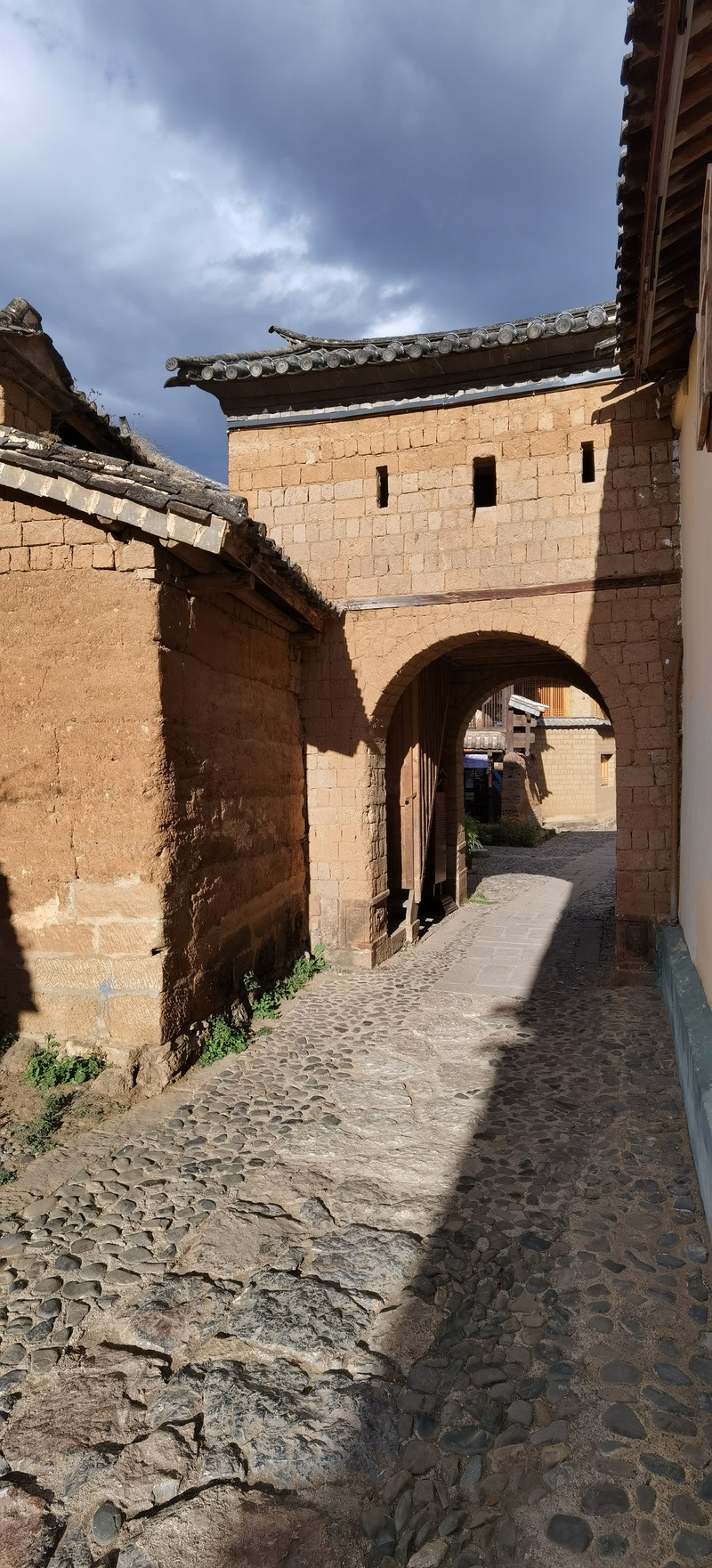

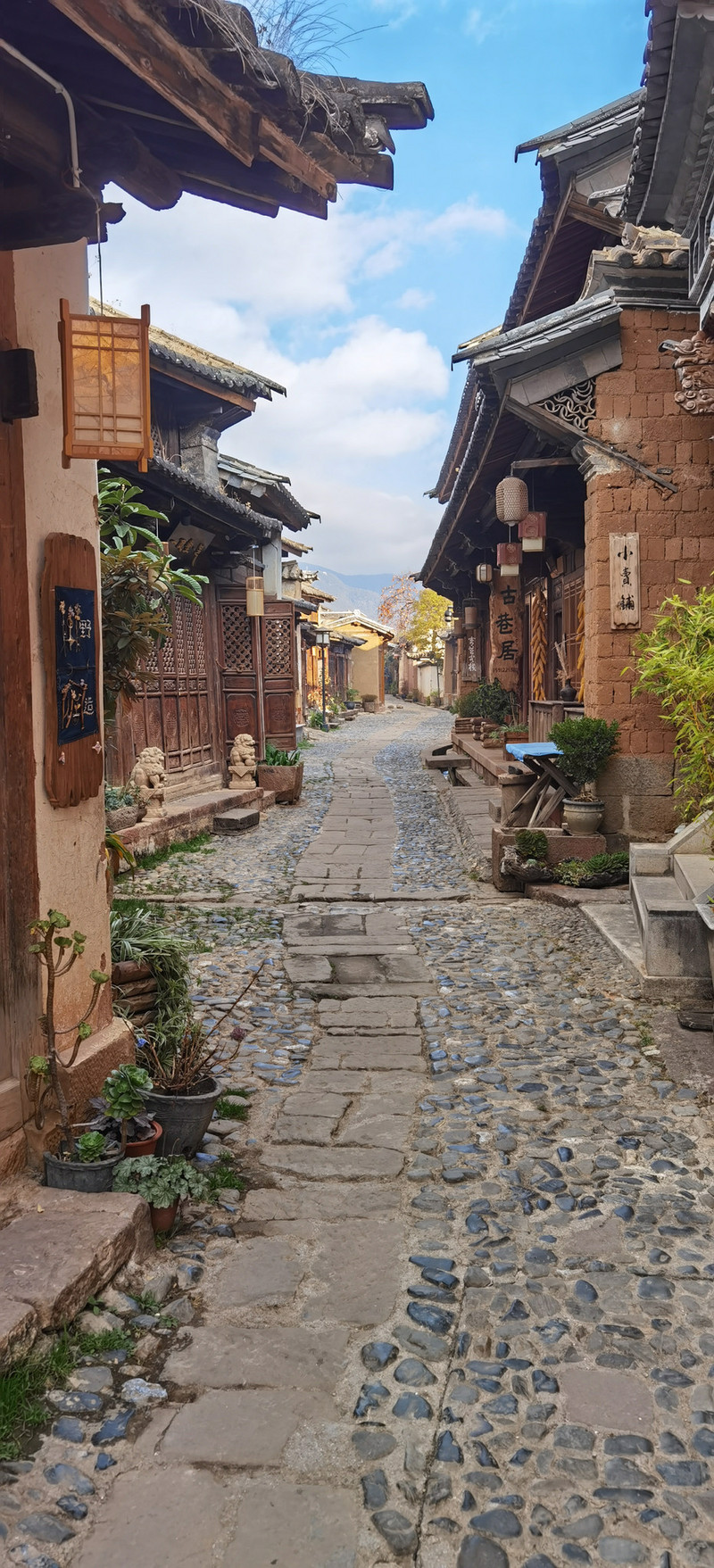

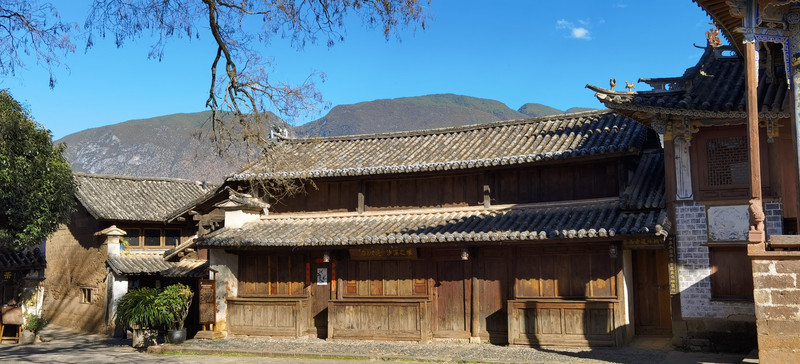







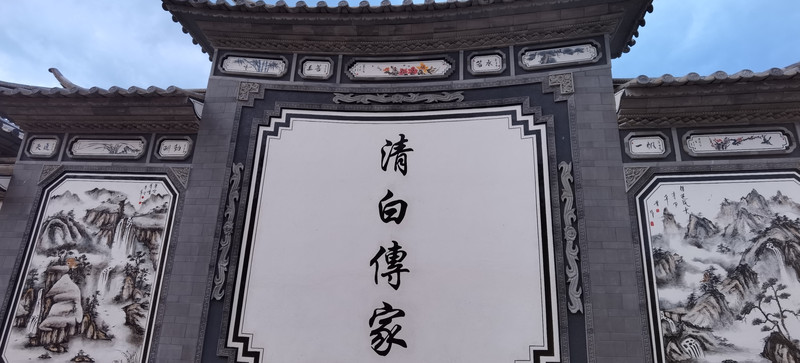

There are also many ancient trees in the town, all of which are three to five hundred years old. There is an old locust tree on the edge of the stage, and its branches and branches set off the simplicity of the ancient stage. There was also an old tree on the edge of the caravan trading hall. The leaves looked a little like willow leaves. The tree shape was very beautiful, and the leaves were golden in early winter. I asked the local people before I realized that it was a coptis chinensis. Dear, coptis trees grow very slowly. How many years must such a big coptis tree have to grow? Chatting with the old man on the street, I learned something about the horse caravan. Why did this become a distribution center for horse gangs on the ancient tea-horse road and prosper into an ancient town? The starting point of the ancient tea-horse road is Xiangyun County in Dali. It is exactly a day's journey from the starting point to here (they call it a foot trip). The horse gangs have to rest here for a night before continuing on their journey. Why is Pu 'er tea made into a round cake shape? It is to facilitate the transportation of horses and camels. Now that mechanized transportation is developed, there are naturally no caravan and a little calm down. Nowadays, horses have become recreational rides for tourists. The entrances of all walks of life in the town are marked with distinctive signs that the "blacksmith shop" used to specialize in making horseshoes. Barbers cut hair. In particular, an old house on Sifang Street still retains the slogan of that year,"The country must be prosperous, the nation must prosper, and the population must be controlled." We have seen Du Le. Are we controlling more or less nowadays? It can be seen that the people who wrote the slogans back then had foresight and could keep up with the situation when they wrote this way. There are not many tourists in the town now, and it seems very quiet. A persimmon tree covered with fruits sticks out of the wall, attracting many birds to peck at it. There is a canal on both sides of the road in the streets and alleys, and mountain spring water flows through it. In the past, these running water was the source of water for every household, and also played a role in fire prevention and disaster relief.




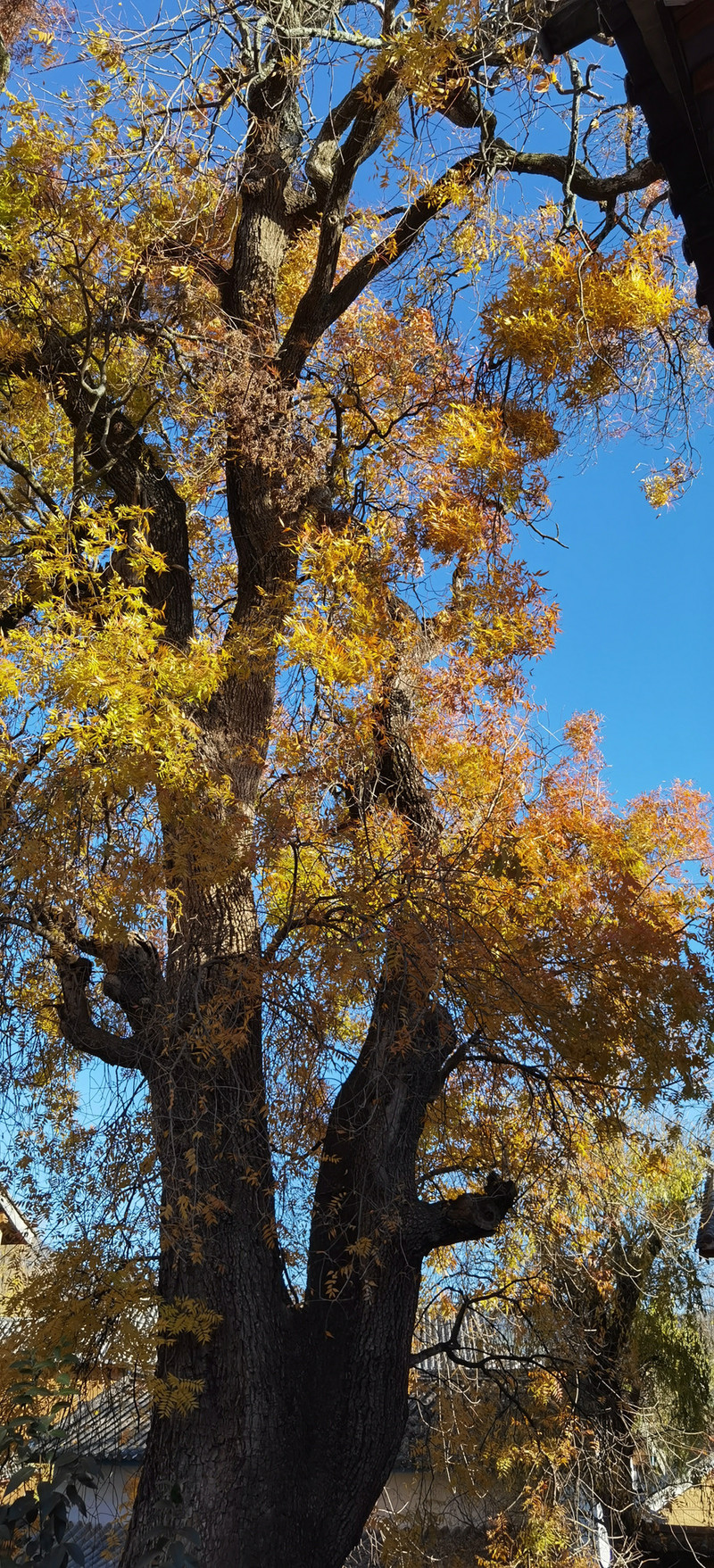





Listening to the gurgling water outside the window at night, I felt like I wanted to lie flat directly. Nowadays, many foreigners rent an old house here, renovate it, and live in it to support the elderly. We met Taiwanese here and even Americans renting houses here. We stayed at an inn called Jingpingshe near Sifang Street. The inn is not big, with only six rooms, and the owner is from Chongqing. I asked him why he opened an inn here? He said that the climate here is much better than Chongqing, with neither cold in winter nor hot in summer. The owner runs the inn alone and keeps two valuable cats. One has English short ears and the other is a big Maine cat in the United States, which is bigger than a Teddy dog. He also raised a huge Doberman who was the security guard at home. Shaxi Ancient Town is indeed different from the Jiangsu and Zhejiang watertowns and the ancient towns in southern Anhui that I have visited. It is a good place worth staying for a long time and relaxing. We planned to stay here for one night but stayed for three. (Some of the pictures are works by the innkeeper).


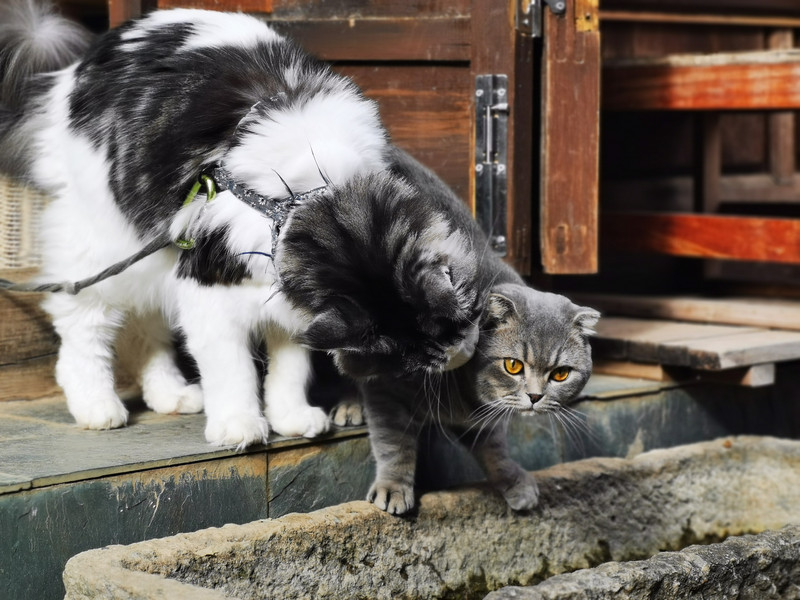
Previous Article:Exploring the south of the colorful clouds 丨 Embracing poetry and distance, chasing the soul of the nation
Next Article:"Water Blossom Manor" in Dali, Yunnan
